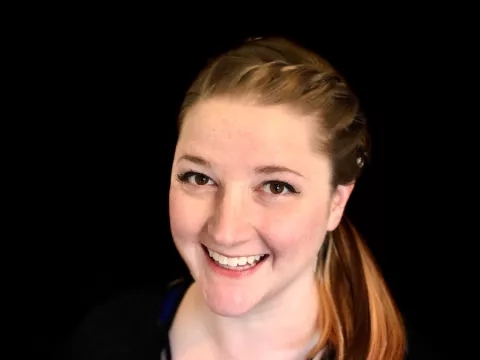As August approached, Alisha Morris, like so many educators across the country, looked ahead to the start of the new school year with a certain level of trepidation and anxiety. Theater director at Olathe High School in Olathe, KS, Morris was waiting for her district to determine what teaching and learning would look like in the new new school year.
Whatever model awaited Morris and her students, she clearly wasn’t going to spend her days with the usual back to-do list that usually occupied her in the weeks leading up to the first day of school.
Around the same time, news stories began to fill her social media feed about COVID-19 outbreaks at schools that had reopened their doors. “As more headlines appeared, I first thought that they were about the same school or district I read about the day before,” she recalls. “But of course they weren’t. I was stunned at the explosion of cases in some states and couldn’t imagine what educators and students were going through.”
A self-described “spreadsheet nerd,” Morris began tracking COVID outbreaks in schools across the country, first by searching news stories on the Internet and then entering the information on a Google spreadsheet. She broke down the data by state, with each entry including a brief summary (confirmed cases, suspected cases, and school closings and deaths) and a link to the news source.
Morris started working on the spreadsheet on August 7th. The project very quickly began to consume all her free time. Within two weeks, she had logged in more than 500 entries.
“I was looking for patterns, collecting the information really for my own benefit,” Morris says. “I was able to channel my anxiety into the project. It helped to see what other districts were going through as they struggled with reopening and new COVID-19 cases.”
My intention wasn’t to take any specific position on any issue. I just wanted to empower educators to help their districts make informed decisions. I just wanted to do my part and get the information out there.” – Alisha Morris
Morris began to wonder if the information had been aggregated in a similar way anywhere else.
“If there was, I couldn’t find it, which surprised me. I thought, ‘Wouldn’t this information be helpful to educators as their districts made these critical decisions about how and when to reopen their schools?'”
After moving the spreadsheet online, Morris soon shared it with colleagues, her district’s board of education, and on Facebook pages and online teacher groups in Kansas. Encouraged by the enthusiastic response and feedback, she began promoting the database nationally.
“That’s when it went viral,” she said. “It was amazing. I began getting suggestions and ideas from educators everywhere about how to refine the tracker and make it more accurate and comprehensive.” Morris turned to crowdsourcing, adding a submissions form to collect articles and information anonymously from around the country.
As the workload multiplied, Morris asked for volunteers to help collect and fact-check the data. Some information came in through social media without a link to an article or a press release. Soon she had more than 50 volunteers collecting and logging articles into the database.
Morris’ tracker soon caught the attention of the national media. Over the past two weeks, she has been interviewed by National Public Radio, Good Morning America, and The Washington Post.
“From day one, my intention wasn’t to take any specific position on any issue,” Morris says. ” I just wanted to empower educators to help their districts make informed decisions. I wanted to do my part in getting the information out there.”
NEA Moves the Project Forward
Morris knew she wasn’t going to have the time to maintain the tracker once classes begun. The week she was due to start, the National Education Association reached out to Morris with an offer to host the project on its Educating Through Crisis web site, NEA’s portal of COVID-19 related resources for educators.
“I was so relieved when I got the call,” Morris said. “Because I know NEA will do a great job and turn it into a well-oiled machine that can reach even more people.”

While the migration of Morris’ data continues, NEA launched the School and Campus COVID-19 Reporting Site last week. The site serves as an outlet for educators to continue reporting COVID-19 cases in their schools, all of which are verified and added to state-by-state downloadable documents by a dedicated NEA team. Additionally, thanks to a new function, educators will be able to confidentially report health and safety concerns they’ve have encountered as school buildings have reopened. These reports are reviewed by NEA staff to flag dangerous conditions and alert State Affiliates and NEA lawyers to potential legal violations.
The overall goal, according to the site, is to “protect educators, students, and their families from unsafe reopening policies,” and also spotlight how too many policymakers have casually dismissed warnings from educators, parents and public health experts on the dangers of reopening too quickly and without proper safety protocols.
The NEA site will further build on Morris’ work by aggregating data from colleges and universities.
For a project that started as a way to channel her anxiety, Morris says tracking COVID-19 cases in schools was in itself rather anxiety-inducing. Still, educators play a critical role in in creating transparency around the health and safety concerns as schools decide how and when to reopen
“It’s going to be a challenging year, so for me, it’s been rewarding to collaborate with so many other educators,” Morris says. “We’ve been isolated for so long. The project has really showed me the level of solidarity and unity across the country.”

